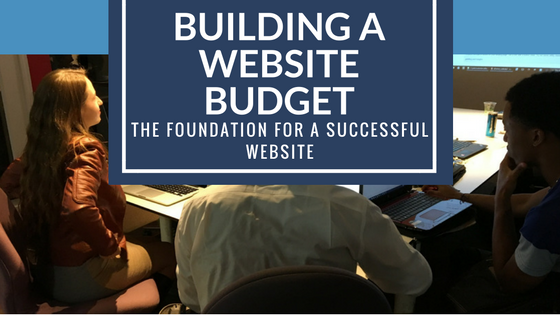Your website is your online storefront, main brand activator and your company’s primary advertising collateral. It’s working hard to secure new customers and reinforce your identity. It has to not only look good but be functional to the standards by your business is built. Although you may want to cut corners, your website is not the place to save money. You should set a budget beforehand to meet your goals and avoid taking unforeseen financial hits. The quality of your website can be the difference between gaining or losing new business.
Common Costs
Current rates for a custom website build can run from $2,000 to $5,000 for a “no-frills” or “brochure-wear” website, while websites with more complex objectives can reach upwards of $50,000 and well beyond. The variance in pricing depends on a multitude of factors; customization, control and security. When working with a professional web designer, you can expect a multitude of disciplines that come together to create a successful development process. Those include, some graphic design skills; front-end development skills; template customization of common content management platforms like WordPress, Drupal, etc; and don’t forget mobile optimization for any and all devices, browsers and their subsequent versions. With all the options that may be included or excluded, the price of building a website varies greatly and it’s always more complicated than you think.
Requirements Brief
It can be difficult for someone who doesn’t regularly work in web design to have a realistic understanding of the scope of a project. Unfortunately, websites are still built like most custom things: by a person who is priced hourly. So it stands to reason the more time a project takes, the more it will cost. To use your web designer’s time as efficiently as possible, think about creating your own requirements brief. This document is usually discussed at the beginning of your engagement with a designer, but to come in ready means you’ll hit the ground running! Here are a few examples of where to start:
- How will you measure the success of your website?
- What are your objectives for your new website?
- What audiences are you targeting?
- What content are you looking for or already have written?
- How should you organize the site to deliver on the objectives?
- What are the functional requirements?
- What are the technical requirements?
- What should the design look like?
Brand State
Do you currently have a brand brief or logo and style guide that defines the look and feel of your overall brand experience? Approved images/graphics that match that aesthetic? A defined voice and character of the content and writing style? If so, you are ahead of the curve and can move on to content curation and wireframing. If not, I highly recommend making those decisions beforehand with the help of an experienced branding pro. Once that’s done the next step is content development and curation. With content curation, your job is to provide the designer ALL of the written content BEFORE they begin the design process. Waiting for approved content is a significant contributor of project delays and wasted time and is a major pet peeve of many designers. If you need help crafting and writing content some developers can recommend resources to help. But mark my words, having it ready to go BEFORE you start the wireframing process will save major headaches all around.
Next is the wireframing. Think of this as building the skeleton. The wireframe is a line drawing of the site with sections marked for written and image content, headers, footers, etc. All to help you get a clear idea of the general layout for your approval prior to the design mockups. Once that’s been approved, the designer will put together the design as a photoshop or PSD file. This will show you what the site will look like but without any web-related function. Once that’s approved you’re off to production. At this stage of development, a developer will begin to re-create the mockup in a pre-determined template or custom HTML to match the design. After many hours, it’s ready to be transferred to your web-server and go live.
The human attention span is now shorter than that of a goldfish, which means you have very little time to make an impact on visitors and convert them to leads. This makes the quality of your website that much more important and worth the time to plan it out and do it right. By planning a realistic budget you can create more than just an interactive billboard for your business, you can create an outstanding lead generating asset for your organization for years to come.

